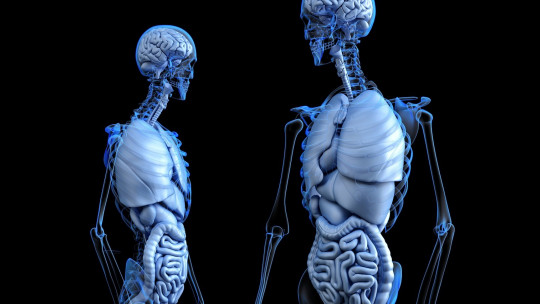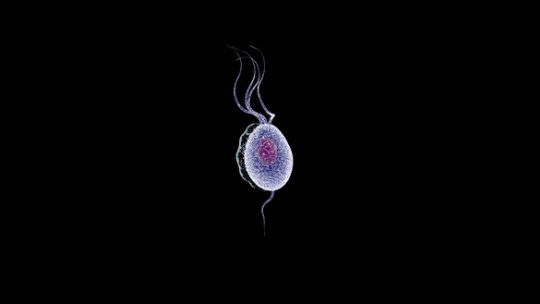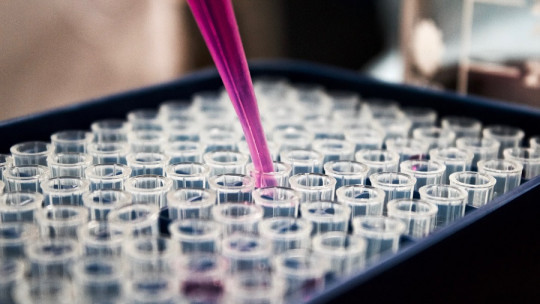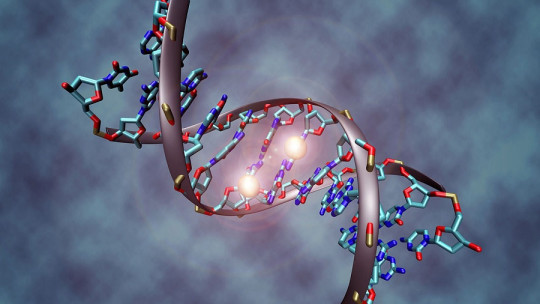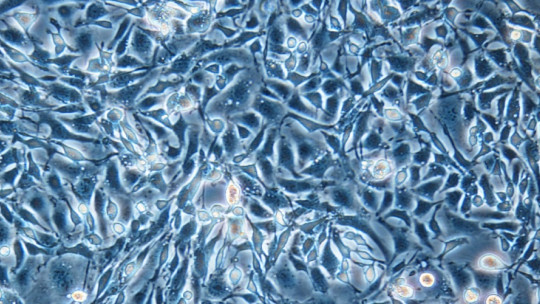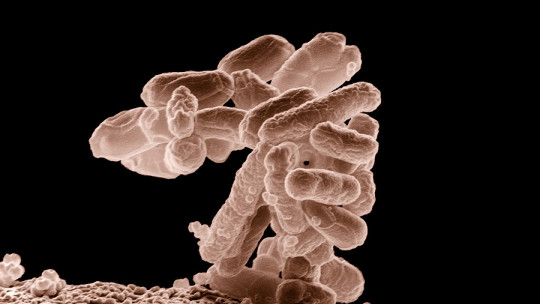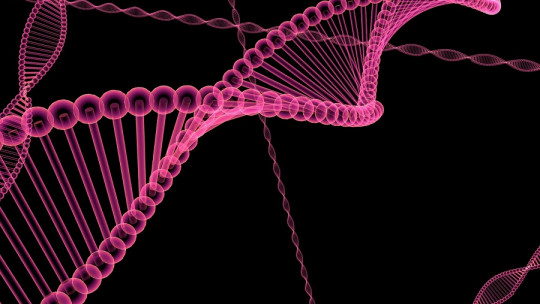
With the passage of time, sciences such as medicine have been progressively developing, something that has allowed life expectancy, its quality and well-being to increase greatly.
Thanks to this, many of the diseases that were once fatal can today be successfully treated, and in some cases it has even been possible to eradicate the disease itself. However, there are still different types of diseases that continue to pose a great challenge to medicine, such as AIDS, cancer or diabetes.
In addition to these, there is a large group of diseases that have to do with the genes transmitted by our ancestors and for which there is mostly no cure (although sometimes treatments can be found to reduce or slow down the symptoms, or correct, reduce or eliminate the impact they cause on the subject and their daily life). We are talking about the set of hereditary diseases a concept that we will reflect on throughout this article.
Hereditary diseases: what are they?
The set of hereditary diseases is called hereditary diseases. diseases and disorders that have the peculiarity of being able to be transmitted to offspring, that is, from parents to children, through the transmission of genes that cause them.
Thus, these are diseases that arise at the chromosomal, mitochondrial or Mendelian level and are due to the existence of genetic mutations that come from our ancestors. It is not always necessary for one of the parents to manifest the disorder or disease, depending on the type of inheritance that occurs: it is possible that he or she is a carrier of a recessive gene that does not trigger the appearance of the disease in him or her, but it can to develop in the descendants.
It’s important to put attention on Genetic diseases and hereditary diseases are not necessarily synonymous And although every hereditary disease is genetic, the truth is that the inverse relationship does not always have to occur: there are genetic diseases that arise from de novo, spontaneous mutations that appear without any family history.
For a disease to be heritable, it is necessary that the genes and mutations linked to its appearance must be present in the germ cells, that is, the sperm and/or eggs that will be part of the new being. In another case we would be facing a genetic but not hereditary disease.
Types of gene transmission
To be able to talk and know where hereditary diseases arise from It is necessary to take into account the multiple methods of genetic transmission through which a mutated gene can be transmitted In this sense, some of the main modes of genetic transmission are as follows.
1. Autosomal dominant inheritance
One of the main and best-known types of inheritance is autosomal dominant inheritance, in which there is a mutation in one of the non-sex or autosomal chromosomes. The dominant gene will be the one that is always expressed, so in the event that there is a mutation in it linked to the appearance of a disease, it will be expressed and develop.
In this case, there will be a 50% chance that each child the person in question has will manifest the disease (depending on who inherits the dominant gene). It can have complete penetrance (one allele dominates the other) or incomplete (two dominant genes are inherited, the inherited traits being a mixture of those that come from the parents).
2. Autosomal recessive inheritance
Autosomal recessive inheritance is that which occurs when there is a mutation or alteration in a recessive gene and it is transmitted to the new generation. Now, the fact that the alteration is found in a recessive gene implies that the disease will not develop unless it exists in more than one allele of a chromosome, in such a way that Possessing a copy of said gene does not mean that the disorder must appear
For this to occur, it will be necessary for both alleles of a gene to have the mutation, that is, both father and mother must transmit an altered copy of the gene to the child for the disease to develop.
3. Sex-linked inheritance
Although to be transmitted they have to integrate into the sexual cells, many of the hereditary diseases are autosomal, that is, the alteration is present in one of the non-sex chromosomes that are going to be transmitted. However, other disorders They are transmitted through copies of the sex chromosomes, X or Y Since only males at a genetic level carry Y chromosomes, if there is an alteration in this chromosome it could only be transmitted from parents to male children.
In the event that the alteration occurs on the X chromosome, it can be transmitted from both parents to their children regardless of their sex.
4. Polygenic inheritance
The two previous types of genetic inheritance are monogenic, that is, they depend on a single gene. However, There are often multiple genes linked to the onset of a disease In this case we will be talking about a polygenic inheritance.
5. Mitochondrial inheritance
Although they are not as well known or common as the previous ones, There are various hereditary diseases and disorders that do not come from the DNA present in the chromosomes, but its origin is found in the organelles known as mitochondria. In these structures we can also find DNA, although in this case it comes exclusively from the mother.
Examples of hereditary diseases
There are many hereditary diseases that exist, and it is possible to find thousands of them. However, in order to put a face and name to some hereditary diseases, below we leave you with a total of a dozen examples (some of them very well known).
1. Huntington’s disease
Huntington’s disease, formerly known as Huntington’s chorea is a hereditary disease with autosomal dominant transmission of complete penetrance.
This disease is characterized by a progressive neurodegeneration that causes, among other symptoms, alterations in movement (highlighting the choreic movement that they perform due to the involuntary contraction of the muscles when moving), as well as a profound alteration of cognitive functions and especially of cognitive functions. executives, which get worse with the passage of time.
2. Hemophilia
This dangerous disease, which is characterized by difficulty in blood clotting and causes profuse and uninterrupted bleeding that can be life-threatening if not stopped, is also a hereditary disease. Specifically Its most common form, hemophilia type A, is a disease linked to the sex chromosomes (specifically linked to the X chromosome) and is transmitted recessively. That is why hemophilia is a disease that is suffered almost exclusively by men, since women have two copies of the X chromosome in such a way that its appearance is difficult.
3. Achondroplasia
Achondroplasia is a disorder of genetic origin that It is characterized by causing alterations in the formation of cartilage and bone, being the main cause of dwarfism
Although in the majority of cases (around 80%) we are dealing with spontaneous mutations, in 20% of them the presence of a family history from which the mutation has been inherited is observed. In these cases, an autosomal dominant pattern is observed, in which a single cup of the mutated gene can lead to causing the disease (if one of the parents suffers from it, her children have a 50% chance of developing achondroplasia). The main associated genes are G1138A and G1138C.
4. Marfan disease
A disease of genetic origin that It is characterized by affecting the connective tissue It is an autosomal dominant disease in which the bones grow uncontrollably, in addition to other possible symptoms such as at the cardiovascular level (highlighting murmurs and affections in the aorta that can be life-threatening) or at the ocular level. (there may be retinal detachments, myopia and cataracts).
5. Cystic fibrosis
Cystic fibrosis is one of the hereditary diseases that occur due to autosomal recessive inheritance, and is characterized by the accumulation of mucus in the lungs in such a way that it makes breathing difficult. Mucus can also appear in organs such as the pancreas, in which cysts can also appear It is a disease that could be fatal, usually due to severe infections, which is more common in children and young people.
6. Leigh syndrome
In this case we are dealing with a hereditary mitochondrial disease (although it can also be caused by autosomal recessive genetic transmission), which It is characterized by rapid neurodegeneration that occurs early (usually before the first year of life) and in which the presence of damage to the brain stem and basal ganglia stands out.
Problems such as hypotonia, movement and gait problems, breathing problems, neuropathy, and impaired heart, kidney, and lung function are some of the common symptoms.
7. Sickle cell anemia
This disorder is characterized by the presence of alterations in the shape of red blood cells (instead of being round, they acquire an irregular shape and become rigid) in such a way that they make it possible to block blood flow, in addition to a reduction in the life of said blood cells (something that can lead to a reduction in the levels of this very component. essential blood). It is another hereditary disease, through autosomal recessive inheritance.
8. Thalassemia
Another blood-related disorder that is inherited through auosomal recessive inheritance is thalassemia. This disease causes difficulty in synthesizing specific parts of hemoglobin (especially alpha globin), something that can cause a lower number of red blood cells to be generated and even generate anemias of different magnitude and severity (although with treatment they can lead a normal life).
9. Duchenne muscular dystrophy
Characterized by progressive muscle weakness (both at the level of voluntary and involuntary muscles), the presence of frequent falls, constant fatigue and sometimes intellectual disability, this serious degenerative disease is fundamentally hereditary, with a recessive inheritance pattern linked to the X chromosome.
10. Phenylketonuria
Phenylketonuria is a hereditary disease that is acquired through autosomal recessive inheritance, and is characterized by absence or deficiency of phenylalanine hydroxylase, something that causes the inability to break down phenylalanine in such a way that it accumulates in the body. It can cause brain damage, and usually causes delayed maturation, intellectual disability, uncontrolled movements and even seizures, as well as a peculiar smell of urine and sweat.
11. Leber Congenital Amaurosis
A rare disease characterized by abnormalities or progressive degeneration of retinal photoreceptors. It can cause great visual impairment, impairing the sense of sight and it is common for those who suffer from it to have a very limited vision capacity. It is a disorder that is inherited in an autosomal recessive manner.
12. Autosomal dominant polycystic kidney disease
One of the most common hereditary kidney diseases, autosomal dominant polycystic kidney disease is characterized by the presence of cysts in both kidneys as well as secondary cysts in other organs such as the liver. The presence of kidney stones, pain, high blood pressure, strokes or cardiovascular problems are also common (including mitral valve prolapse as one of the most common). It can even lead to end-stage renal failure. It is an autosomal dominant disease with complete penetrance, with mutations in the PKD1 and PKD2 genes.

